Services - Rehab
Rehabilitation and Exercise
Rehabilitation
Anytime your mobility and health are compromised your physiotherapist can help maximize your return to independent functioning. Prompt attention to injuries or conditions will speed healing, recovery, and return to your normal activities. Treatment may include use of physiotherapy modalities, manual therapy, exercise prescription, gait assessment and prescription of walking aids, and education (of what to expect and how to modify aggravating activities while you are healing). A physiotherapist will use one or more of the following treatments to assist in the rehabilitation of a patient.
Therapeutic Modalities
The use of electrical currents, sound waves, ultraviolet rays and laser for promoting tissue healing are commonly used by physiotherapists. They are often used in conjunction with other treatment techniques, such as exercise and manual therapy.
Electrical stimulation
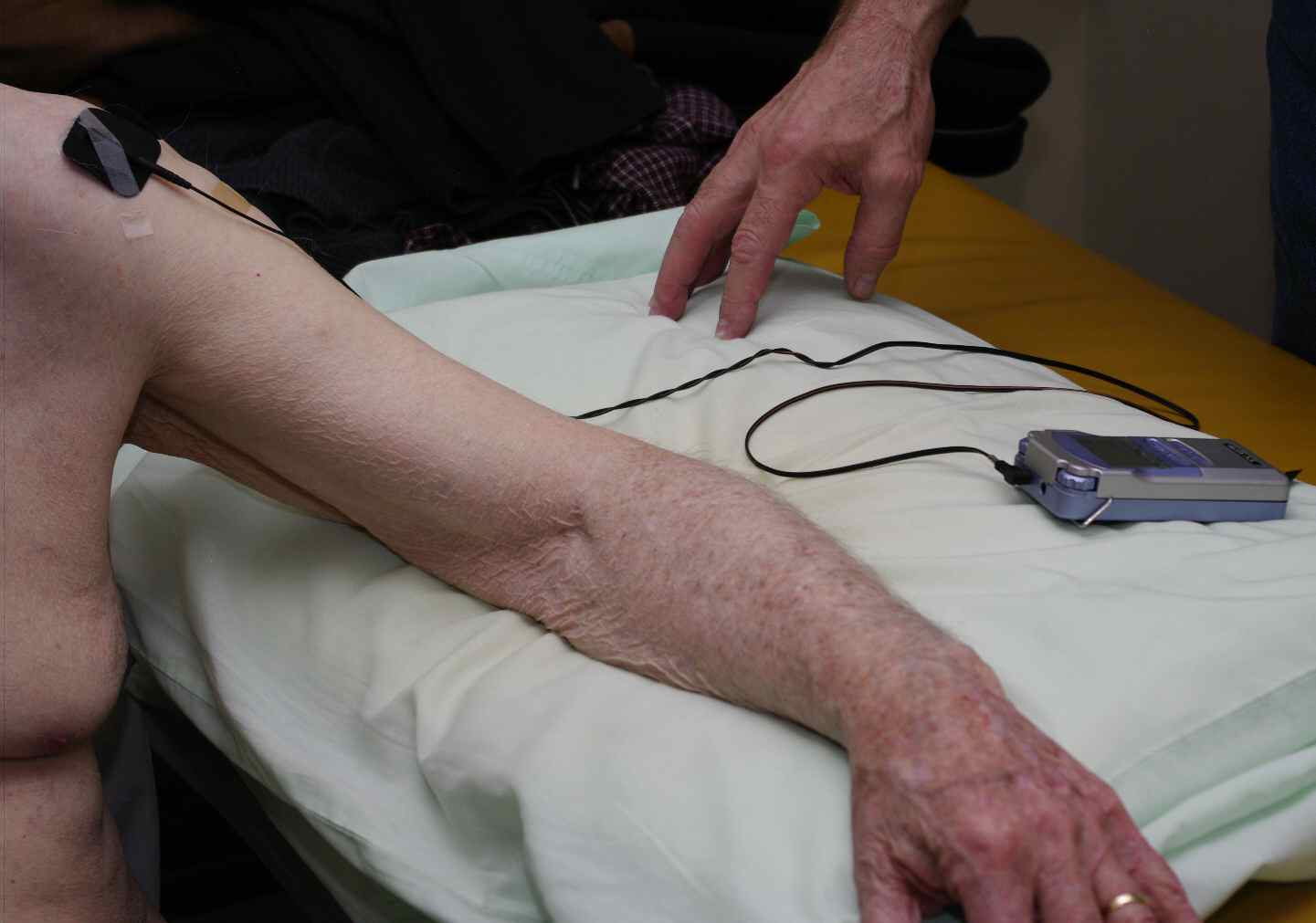
This therapy uses an electrical current to cause a single muscle or a group of muscles to contract. By placing electrodes on the skin in various locations, the physiotherapist can recruit the appropriate muscle fibres. Contracting the muscle via electrical stimulation helps strengthen the affected muscle. The physiotherapist can change the current setting to allow for a forceful or gentle muscle contraction. Along with increasing muscle strength, the contraction of the muscle also promotes blood supply to the area that assists in healing. Physiotherapists often use a TENS (transcutaneous electrical nerve stimulation) unit, a small battery operated machine, that uses electrical transmission to decrease pain. Electrodes are applied to the affected area. The machine is turned on and an electrical current is sent through the electrodes. A tingling sensation is felt in the underlying skin and muscle. This signal disrupts the pain signal that is being sent from the affected area to the surrounding nerves. By breaking this signal, the patient experiences less pain.
IFC Units
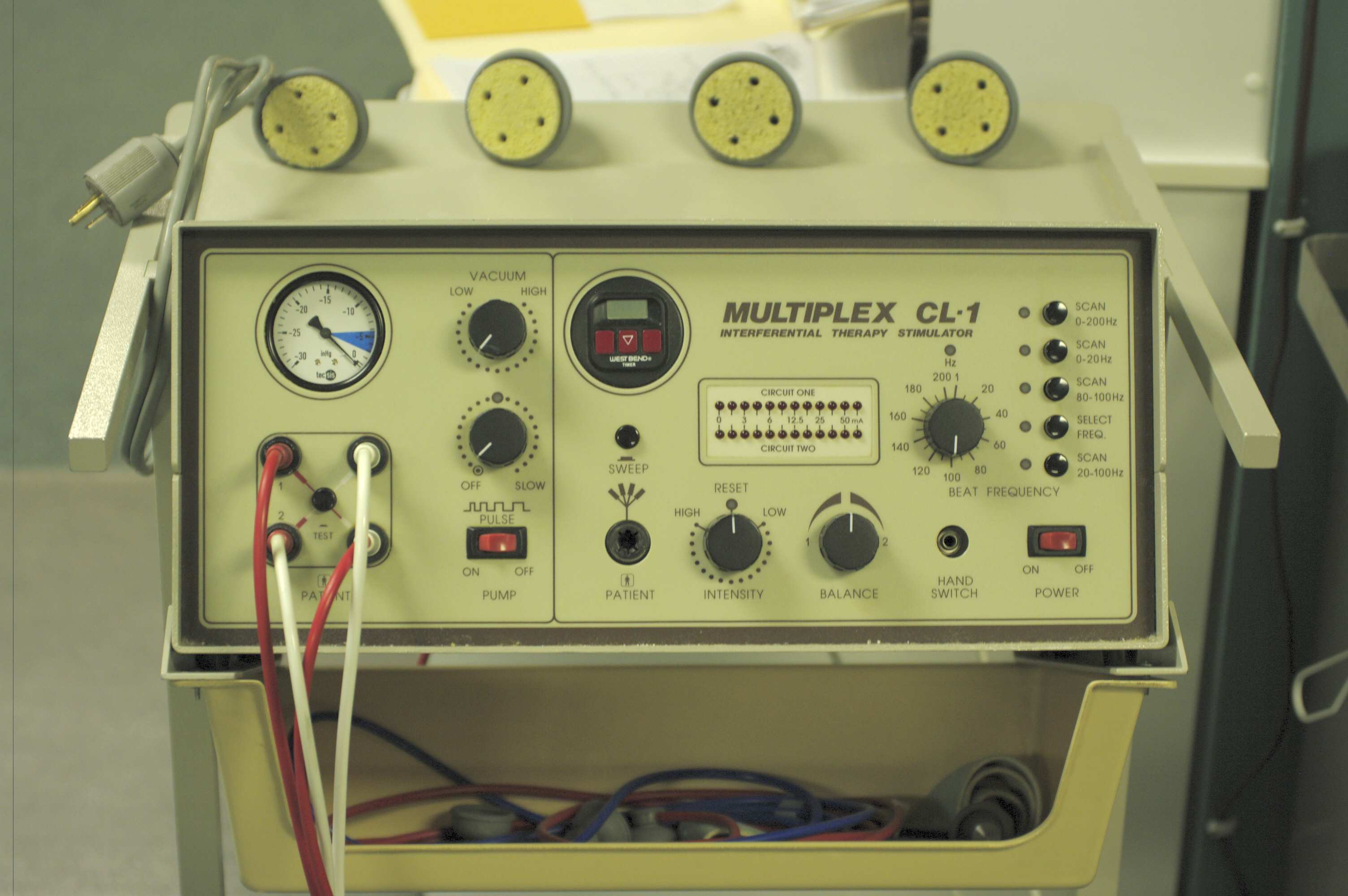
Interferential current units (IFC) are another form of electrical stimulation. Interferential current is essentially a deeper form of TENS which modulates a high frequency carrier waveform that penetrates the skin more deeply than a regular TENS unit. The IFC current reaches to greater depths and over a larger volume of tissue than other forms of electrical therapy. This explains why interferential current may be most suitable for treating patients with deep pain. Since Interferential Therapy has been in use for many years, its effectiveness is well documented. Studies have shown that patients using Interferential Therapy after surgery develop fewer post-operative complications than those relying solely on narcotics for pain relief. Multiple treatments will typically speed the patient's recovery and allow earlier resumption of their normal lifestyle.
Ultrasound
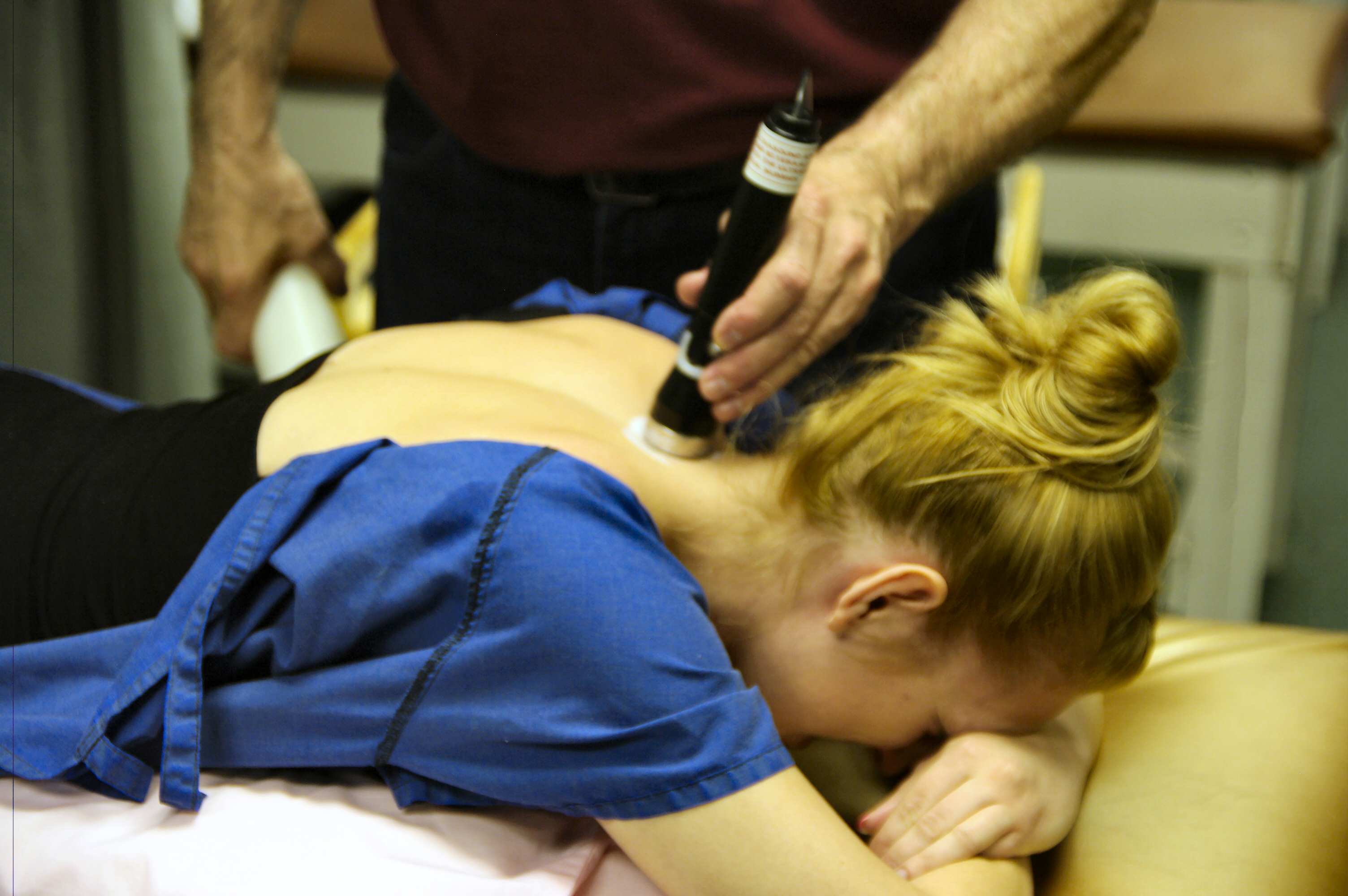
Ultrasound machines are a treatment modality used by physiotherapists that utilize high or low frequency sound waves. These sound waves are transmitted to the surrounding tissue and vasculature. They penetrate the muscles to cause deep tissue/muscle warming. This promotes tissue relaxation and therefore is useful in treating muscle tightness and spasms. The warming effect of the sound waves also cause vessel vasodilatation and increase circulation to the area, that assists in healing. The physiotherapist can also adjust the frequency on the machine to use waves that will decrease inflammation. Ultrasound waves penetrate the body safely up to ten cm. As the sound waves pass into the soft tissue, like a ligament, they micro massage and vibrate the tissue causing a heating of the tissue. Heated soft tissue stretches and moves easier; allows nutrients to be absorbed better; and, creates improved blood circulation which flushes inflammatory chemicals out of the area. Ultrasound also causes a breakdown of scar tissue and adhesions (layers of tissue stuck together); helps the healing tissue to be strong and flexible; breaks down calcium deposits or old blood deposits from trauma; and, aids the body to reduce swelling.
Laser
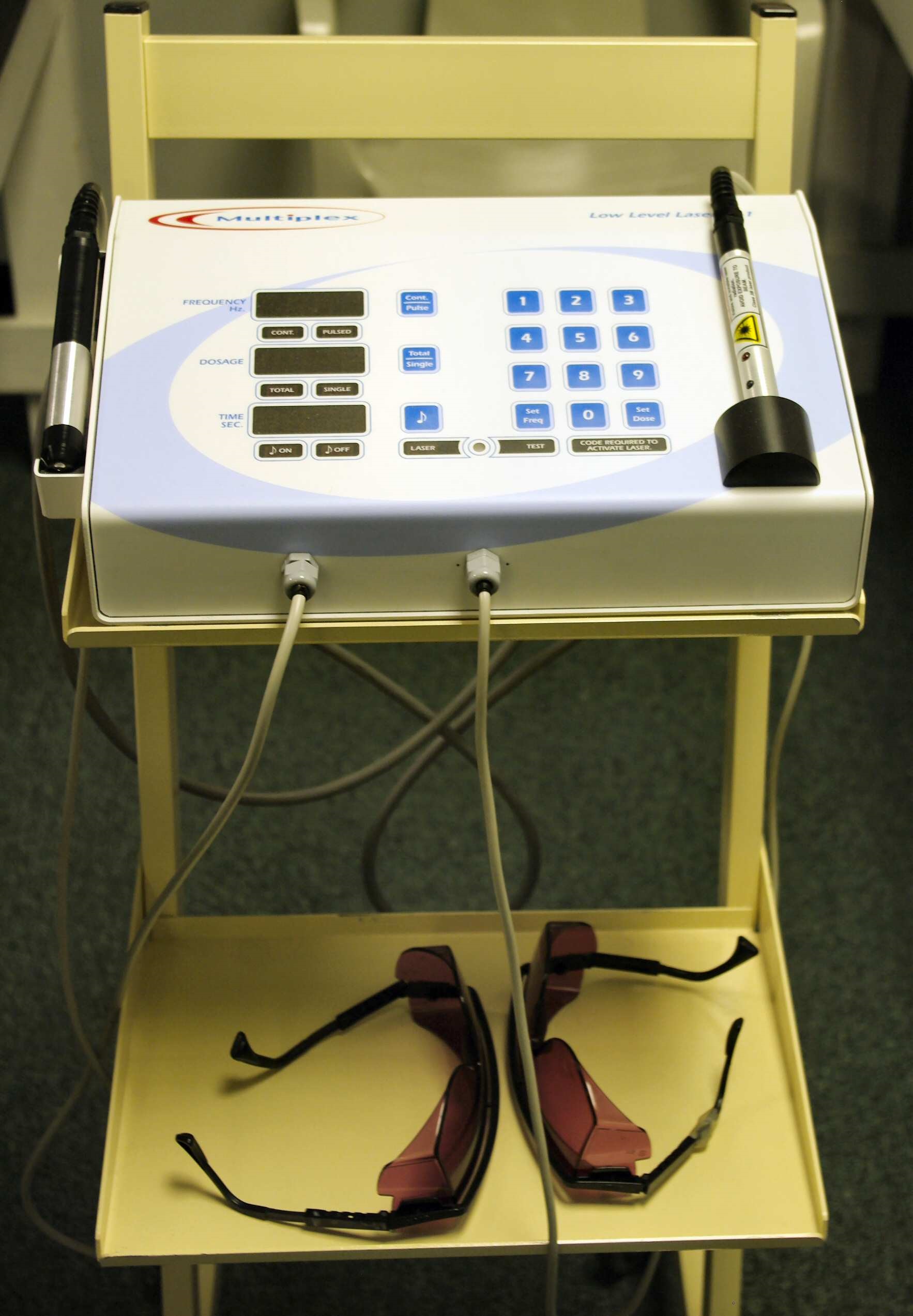
Therapeutic Lasers offer a wide variety of benefits to patients that include pain reduction, improved healing time, increased blood circulation and decreased inflammation. Laser Therapy blocks the pain signals transmitted from injured parts of the body to the brain. This decreases nerve sensitivity and significantly reduces the perception of pain. Laser Therapy also reduces pain by decreasing inflammation and swelling, and by increasing the production and release of endorphins and enkephalins which are natural pain-relieving chemicals within our bodies. Laser light speeds up the process of nerve cell reconnection which decreases the time necessary for nerve cells to heal after an injury. Laser Therapy also increases the amplitude (strength) of action potentials (signals sent along nerve fibres) which improves overall nerve and muscle function. Laser Therapy causes the smaller arteries and lymph vessels of the body to increase in size; this allows inflammation, swelling and edema to be cleared away from injury sites more effectively. Laser therapy accelerates tissue repair and cell growth, improves blood flow, increases metabolic activity, reduces formation of scar tissue, and enhances the immune function; all benefits in speeding a patient's rehabilitation.
Manual Therapy
Manual therapy refers to treatments administered directly by your therapist’s hands. All physiotherapists are trained in massage, muscle release, stretching, and mobilization of joints and soft tissues. Manual therapy is helpful for the treatment of joints and muscles that lack adequate mobility and range of motion. This limitation can cause discomfort, pain, and an alteration in function, posture, and mobility. Manual physiotherapy involves restoring normal mobility and biomechanics which helps provide relief for acute, sub-acute and chronic pain conditions.
Manual therapy may employ the following:
- Joint Mobilization - a rhythmic oscillation or a sustained pressure applied to the joints of the body. This will help to decrease pain as well as restore normal mobility and function.
- Joint Manipulation - a skilled, quick, passive movement applied by a physiotherapist to a specific joint. This will help decrease pain as well as restore normal mobility and function.
- Soft Tissue Mobilization - (including massage, trigger point therapy, etc.) is applied to the muscles, tendons and ligaments. This will help relax muscles, increase circulation, break up scar tissue, and ease pain in the soft tissue.
Exercise
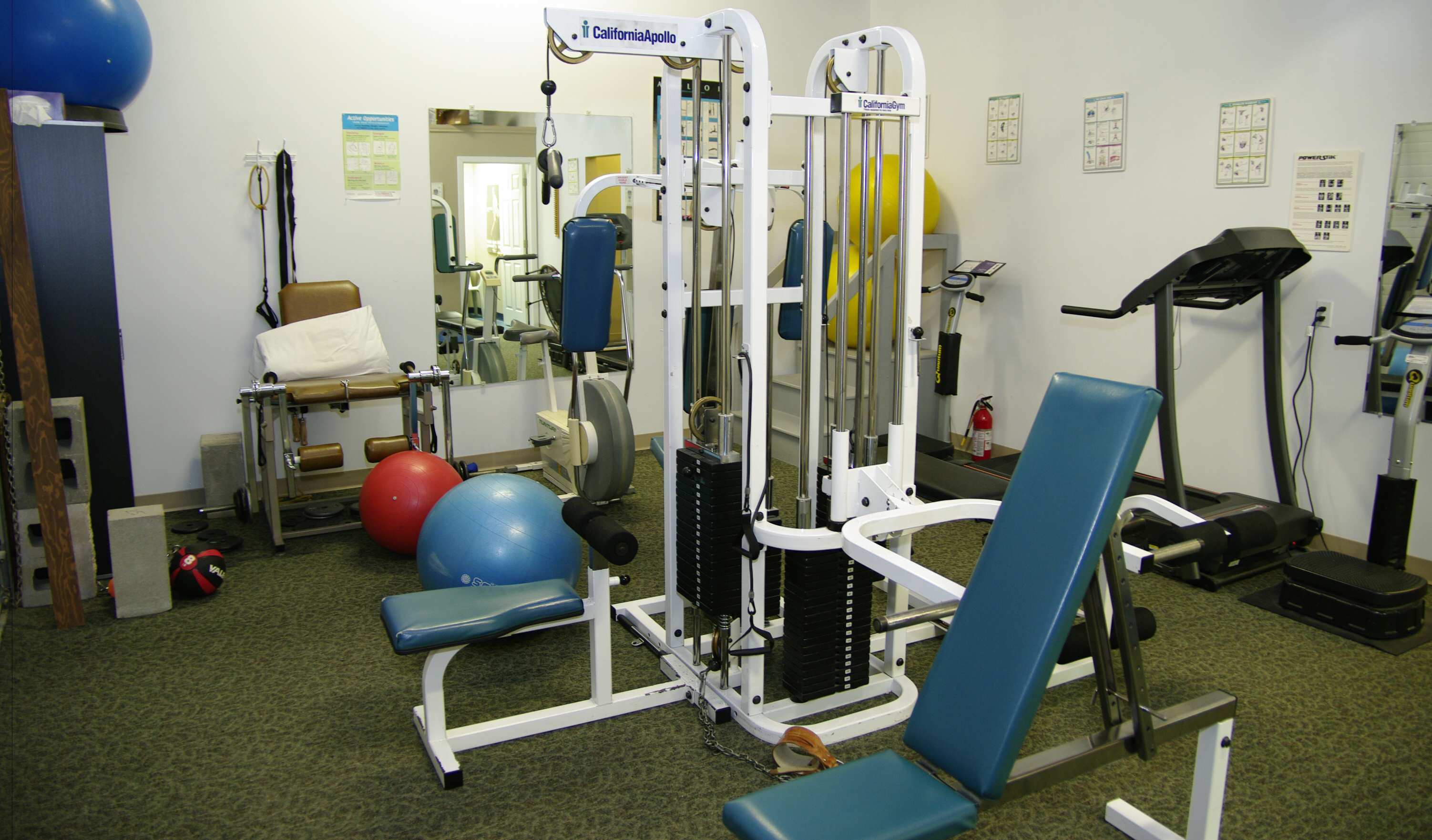
Exercise and education is a significant portion of a physiotherapist's work with a patient, as exercise assists in recovery from specific ailments. Physiotherapists study body function, anatomy and muscle movement. They are able to quickly identify soft tissue problems. Your physiotherapist can help you recover from injury by prescribing exercises that can be done while at home or work. Making use of your idle time by doing your exercises is a sure way to speed up your recovery. Try it while your children play at the park, during television commercial breaks, or on your coffee break.
Physiotherapy exercises are important parts in the recovery of patients or clients with musculoskeletal conditions or disorders. There are various physiotherapy exercises that your physiotherapist will include in your rehabilitation program, often, in combination with other treatment options. The type of physiotherapy exercises that you will perform will depend on the stage of your recovery.
Range of Motion Exercises
Range of motion exercises increase the freedom of movement of joints, musles, ligaments and tendons. These exercises may be performed either with the assistance of a physiotherapist, or done by the patient on their own with guidance from the therapist. A patient may have tightness in a joint or muscle, which can limit the available range of motion for that joint. In this case, a physiotherapist may use a heating modality to help loosen tight tissues prior to stretching to improve the joint range.
Strengthening Exercises
Muscle strengthening exercises improve the ability of muscles to move your body against gravity and support your joints. To strengthen muscles, you have to train and challenge them against resistance. Strengthening exercises are usually done on weakened muscles. Strengthening your major muscles are an important part of a balance rehab program for someone having problems with their balance. Strengthening exercises may also be done as part of a client’s general conditioning exercise program. Having normal muscle strength helps prevent future injury.
When muscles are not moved for a while because of an injury or immobilization (cast or brace), the muscles tend to get weak. Often, progressive strengthening exercises are included in your rehabilitation program. Depending on your specific needs and level of fitness, your physiotherapist may let you perform the exercises with resistance bands and progress on to weights as your strength improves.
Aerobic or Cardiovascular Exercises
These general conditioning exercises improve the ability of your body to perform activity for longer periods of time. They may involve a combination of exercises including range of motion, strengthening, and walking exercises to help maintain or improve your cardiopulmonary fitness; muscle and joint flexibility; and muscle strength.
A combination of all three types of exercise described above is ideal for a general program. A program needs to be set up and personalized for you, given your expectations and goals, and any injuries or medical conditions you might have. When exercising, it is okay to feel the burn and tired feeling of muscles working; however, there should not be any sharp or stabbing pains. If you are having discomfort in your joints or your back, it should not be more than mild, and should not persist more than one to two hours after exercising.
Rehabilitation and exercise, under the care and direction of a physiotherapist, can significantly reduce the pain and length of time taken to allow resumption of your normal lifestyle and activities.
Service Links
Physiotherapy
